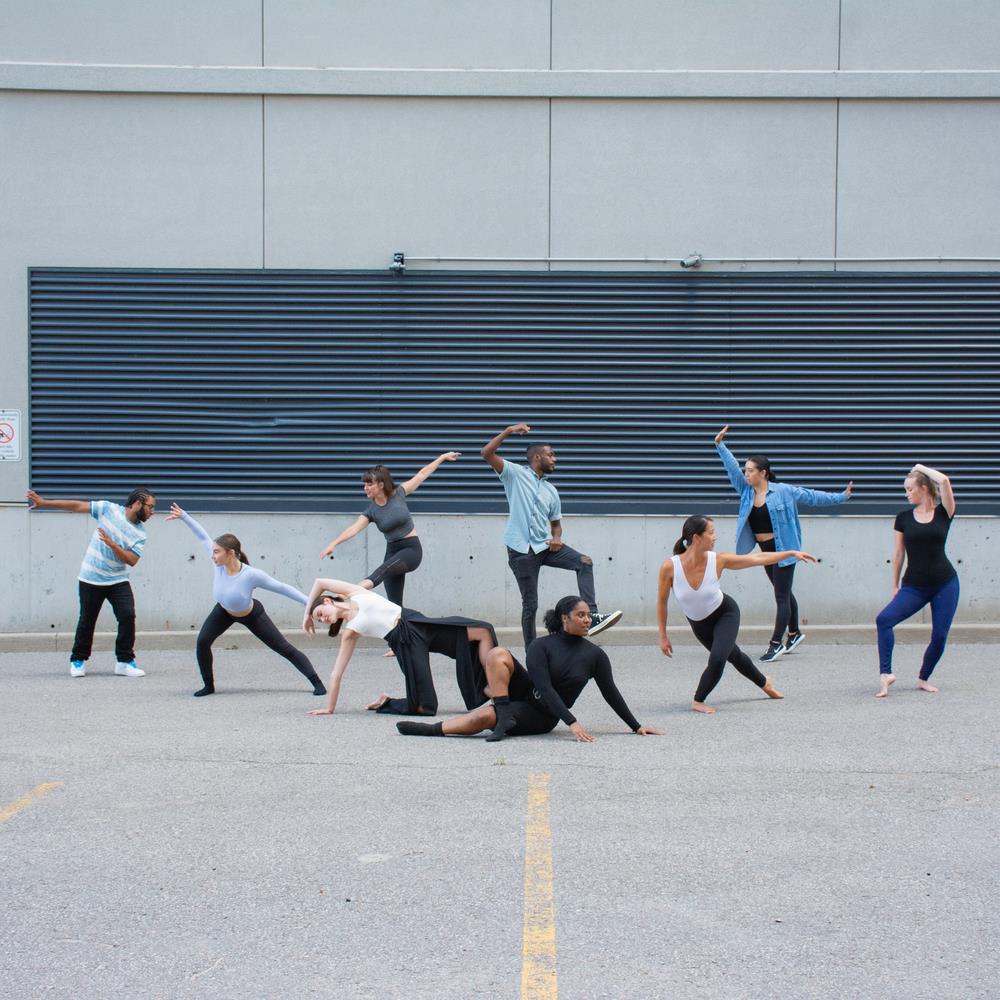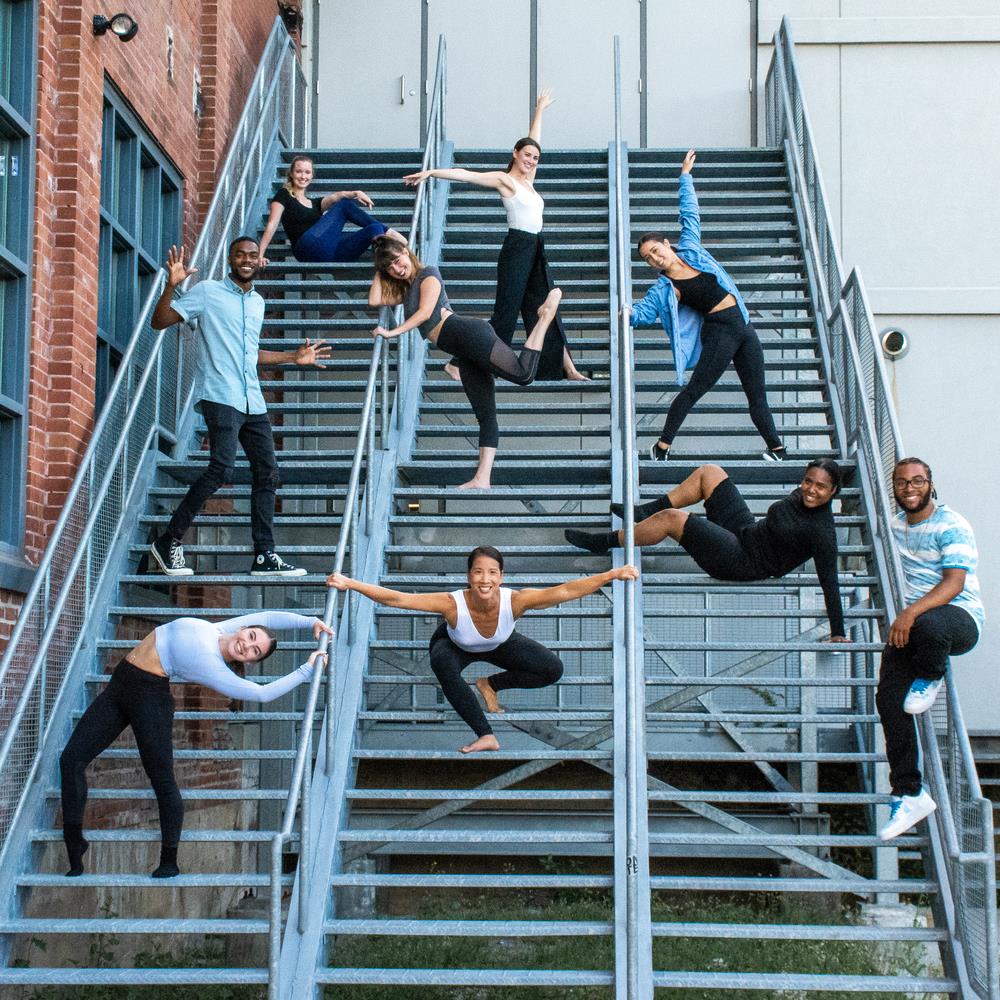NDEO’s Guest Blog Series features posts written by our members about their experiences in the fields of dance and dance education. We continue this series with a contribution by Lindsay Daniels, Dance Teacher with the Durham District School Board. Guest posts reflect the experiences, opinions, and viewpoints of the author and are printed here with their permission. NDEO does not endorse any business, product, or service mentioned in guest blog posts. If you are interested in learning more about the guest blogger program or submitting an article for consideration, please visit this link.
Educating the Masses: Dance Advocacy in our Communities
By Lindsay Daniels, Dance Teacher with the Durham District School Board

Photo by Lucy Villeneuve
“My child doesn’t want to be a professional dancer, so why would they take dance in high school?”
Earlier in my career, I used to get this question often from parents. Although I knew the transformative and meaningful impact dance education can have, the masses just didn’t get it. From parents, to colleagues, students that were not in the program, and the general public, dance is more often than not, misunderstood, undervalued and underappreciated. I quickly learned that educating those who were not in our dance program about the importance and impact of dance was just as, if not more important, than instilling these values into my students who were experiencing it first hand.
So, how do we create a culture of understanding and respect in our communities around dance education? Here is what has worked for us:
1. Show Them: The Power of Video
In our year-end productions, we started to incorporate videos in between our pieces. Some were to explain what the following piece was about (to aid in audience understanding and context), others involved interviewing students on topics such as:
-
What do they learn in dance besides technique and choreography (students spoke of collaboration skills, communication, anatomy and physiology, the creative process etc. )
-
Why do they love dance? How does it impact their lives?
-
The process of creating a piece: What is involved, the skills required etc.
We have had these videos professionally made but also collaborated with our school’s media arts department for a cross-curricular opportunity with students.
Here are a few examples that we have included in our shows:
Maxwell Heights Dance Culture
Maxwell Heights Dance Courses
When your audience can see behind the scenes, hear from student voices and then the final product on stage, it greatly impacts audience understanding and respect for the art form.
2. Student Voice
Our high school program now performs annually for our elementary feeder schools, and our senior students will address the audience at each performance. They speak about:
-
Their experience in the program
-
Why dance has been their favourite part of their high school experience
-
Dance is for all, not just for those who have had previous training or experience (a common misconception in our community)
There is greater relatability when younger students hear directly from our dancers versus us, the teachers. This has helped build trust and understanding with our in-coming students, and develops confidence and leadership skills in our current dancers as they speak proudly and honestly about their experience in our program.

Photo by Lucy Villeneuve
3. Bring in the Research
When educating and advocating for dance, supporting your argument with research is key. The public doesn’t necessarily understand or know that dance helps our students with focus, memory retention, and mental processing. In other words, dance helps our students be more successful in other subject areas. The research also shows that dance positively impacts social skills, confidence, and improves mental health in addition to the many physical benefits of movement. Although we as educators see this daily in our work, the masses do not. A part of our job is getting the word out.
4. Communicate
Through newsletters, introduction emails to parents, report card comments, parent/teacher interviews etc., we explain to parents what their child is learning beyond combinations and technique, how they are benefiting from dance education, and why they should continue taking dance in the future. We cannot assume parents are making these connections, we need to point it out for greater understanding.
5. Get Your Students on Board
Do your students know the value of dance and how it benefits them? We discuss them frequently to bring them to the conscious level. For example:
-
At the end of class, ask students to reflect on what they learned about themselves today? What skills did they need to use (beyond the physical) to be successful? How do they feel physically and mentally post class? Has it set them up to be alert and focused for the rest of their day?
-
Have your students write out what they would say to someone if asked, “Why do you take dance?” Have them include not only their experience but the research mentioned above as a part of their response.
-
Include a unit on dance advocacy in your curriculum. Brainstorm ways you can educate your own community on the benefits of dance.
Students cannot be great advocates if they do not have the opportunity to be nor can they educate others if they don’t know themselves.
In order to change misconceptions about dance and its impact, we need to educate our communities. Now, very rarely do I get the question “why should my child take dance if they don’t want to be a professional dancer?” because our community now understands and values the learning, growth and student development that is a result of a dance education in our school.
 Lindsay Daniels (B.Kin., B.Ed., OCT) is a dance educator with the Durham District School Board, curriculum writer, choreographer, speaker, adjudicator and the Artistic Director of The Movement Project in Oshawa, Ontario, Canada. She is deeply passionate about dance education, its benefits to students and impact on schools. With over 20 years of experience as a dance educator, Ms. Daniels is a recognized leader in the Durham region arts community and is known for her award winning secondary dance education programming at Sinclair Secondary School and Maxwell Heights Secondary School. Her programming incorporates all areas of dance education including: composition skills, technique, dance history, social justice and dance, anatomy, physiology and injury prevention. In addition to her role as a secondary school educator, Ms. Daniels now leads other educators through professional development opportunities and the additional qualification course in Ontario, certifying teachers to teach dance in Ontario schools. You can find Lindsay on Instagram @themovementproject.ca or visit The Movement Project at www.themovementproject.ca. Headshot by Ashley Adams.
Lindsay Daniels (B.Kin., B.Ed., OCT) is a dance educator with the Durham District School Board, curriculum writer, choreographer, speaker, adjudicator and the Artistic Director of The Movement Project in Oshawa, Ontario, Canada. She is deeply passionate about dance education, its benefits to students and impact on schools. With over 20 years of experience as a dance educator, Ms. Daniels is a recognized leader in the Durham region arts community and is known for her award winning secondary dance education programming at Sinclair Secondary School and Maxwell Heights Secondary School. Her programming incorporates all areas of dance education including: composition skills, technique, dance history, social justice and dance, anatomy, physiology and injury prevention. In addition to her role as a secondary school educator, Ms. Daniels now leads other educators through professional development opportunities and the additional qualification course in Ontario, certifying teachers to teach dance in Ontario schools. You can find Lindsay on Instagram @themovementproject.ca or visit The Movement Project at www.themovementproject.ca. Headshot by Ashley Adams.